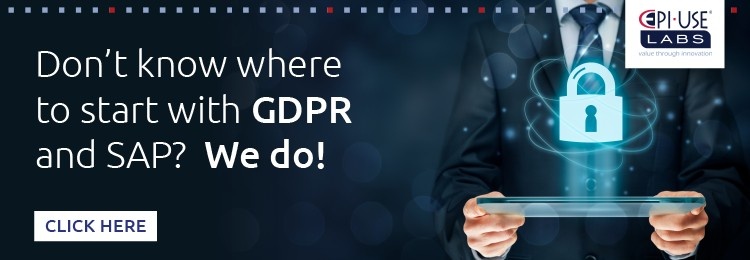-
SOFTWARE
SOFTWARESAP HCM/HXM & PayrollQuery Manager Query Manager Add-ons Document Builder Variance Monitor DSM for HCM HCM/HXM Productivity Suite FLOW GeoClockSAP Landscape & Test Data ManagementData Sync Manager (DSM) suite - System Builder/Shell Sync - Object Sync - Client Sync - Data Secure Archive CentralSupport & TrainingClient Central E-learning & trainingSAP Data Privacy & SecurityData Privacy suite - Data Secure - Data Disclose - Data Redact - Data Retain Cenoti (Splunk connector) Soterion (GRC)
-
SERVICES
SERVICESSAP HCM/HXM & PayrollPRISM for HR & Payroll SAP SuccessFactors Integration monitoring Payroll reporting Report writingClient-specific DevelopmentCustom development SAP BTPSAP Landscape & Test Data ManagementPRISM Migrations to S/4HANA System Landscape Optimization (SLO) Managed data refresh servicesSAP Data Privacy & SecuritySAP data privacy assessment serviceMass data removal services Data privacy consultingCloud and Application Managed ServicesFunctional AMS Cloud management services Cloud migrations Basis managed services Private cloud hosting SAP on AWS SAP on Azure Premium Support Services
- All Solutions
- Request Estimate
-
Resources
Resources Blogs Read the latest updates on SAP SLO, SAP HCM, Data & Privacy, and Cloud Webinars Access expert insights in live and recorded webinars Video library Watch videos and improve your SAP knowledge
- About
The world wakes up to GDPR: where did it come from?
As Senior Vice-President of the ALM Products at EPI-USE Labs, Paul Hammersley's portfolio includes test data management, landscape optimisation, and archiving. He has been a remarkable technical force in the SAP arena for over 20 years, and has extensive hands-on experience of implementing Data Sync Manager (DSM) and helping clients to manage data across the breadth of their SAP landscapes.
Since the start of the year, the volume has definitely been turned up on GDPR. I was speaking to customers and partners about GDPR throughout 2016, but in many cases the start of the conversation was explaining the basics to them (which was often met with some shock and concern). Having enlightened a customer on this topic, I was expecting immediate requests for data analysis services, product demos etc. In my mind, this was such a wide-ranging compliance requirement, and May 2018 was looming ever nearer. I was starting to fret on my customers’ behalf and couldn’t understand why they weren’t.
Then it dawned on me: this regulation has been in the making for over seven years. The last few years probably started with the expectation of it being finalised, but that never came to pass. So those working exclusively in the data privacy and governance areas were aware of it, and monitoring the situation, but the wider business was unaware. And crucially, no additional budget was allocated for GDPR compliance in the 2016 fiscal year, because no one expected the draft to be agreed for sure. Organisations starting their fiscal year in January this year were for the first time able to plan budgets with a certainty of when this regulation would come into effect.
Of course, that is essentially how big organisations work. Projects may be interesting, important or critical to the business, but the moment you want to allocate someone’s time to them, the question is asked: which budget is this allocated against? And if the answer is ‘there isn’t one’, then the subject is put on the back burner. I remember a few years ago talking to a customer about why they weren’t masking data in test systems, and the response was ‘we know we should be doing more, but right now there isn’t budget for that’. And that, of course, is the difference. With the headline of potential fines of 4% of global turnover or €20 million Euro, it’s much easier to get a slice of the cake when the budget is being planned.
For the companies that now have budget allocated, a team has been put together, or at least earmarked, that combines IT, Compliance, Legal and Audit. And when they start to size up the sheer scope, it’s clear this is a significant undertaking. The project will look different for every company, varying greatly between industries, countries where they trade, company culture, IT systems used, business processes in place and much more.
In effect, the project looks like a big road map with some significant bridges or tunnels missing (or in some cases whole roads!) that would allow all the necessary journeys to take place. The focus is initially on the biggest gaps: How can we access file system data on shared drives? What about paper copies? Can we give the Right to be Forgotten for these data and process types? It’s interesting being in some of these discussions and seeing common themes and approaches.
I’ll continue to share more as these projects evolve.
Posts by Topic
- GDPR (41)
- Data Privacy (32)
- Data Security (31)
- Data Secure (20)
- GDPR compliance (18)
- Data Redaction (13)
- data scrambling (13)
- General Data Protection Regulation (12)
- Data Redact (11)
- POPI Act (11)
- POPIA (10)
- SAP Data Security (10)
- SAP GDPR (10)
- Data Archiving (9)
- Data Sync Manager (9)
- SAP data privacy and compliance (9)
- Right to be forgotten (8)
- Data privacy compliance (7)
- Data privacy regulations (7)
- GDPR readiness (7)
- GDPR deadline (6)
- Personal data (6)
- SAP (6)
- SAP security (6)
- GRC for SAP (5)
- SAP systems (5)
- Access Risk management (4)
- Access risk controls (4)
- Data minimisation (4)
- Data security breaches (4)
- Governance, Risk Management and Compliance (GRC) (4)
- SAP data privacy and security (4)
- compliance (4)
- COVID-19 (3)
- Data Privacy suite (3)
- Data privacy by design (3)
- Risk monitoring (3)
- SAP data copying and masking (3)
- SAR (3)
- Soterion (3)
- Subject Access Request (3)
- anonymised data (3)
- Australian Privacy Act 1988 (2)
- CCPA (2)
- Cenoti (2)
- Client Sync (2)
- Data Protection Day (2)
- Data masking (2)
- European operations (2)
- Federal Law (2)
- GDPR fine (2)
- Guest order (2)
- ICO (2)
- May 2018 (2)
- Object Sync (2)
- One-time customer (2)
- Privacy by Design (2)
- Reducing risk (2)
- Right to Erasure (2)
- Risk minimisation (2)
- S/4HANA Migrations (2)
- SAP S/4HANA (2)
- SAP data (2)
- SAP data privacy & security (2)
- Secure scrambled production data for testing (2)
- Test Data Management (2)
- security breach (2)
- Backlog privacy debt (1)
- Black Friday (1)
- Black Friday hangover (1)
- Black Friday sales (1)
- Breach Notification (1)
- Brexit (1)
- Budget (1)
- Canada data privacy legislation (1)
- Cenoti, connecting SAP with Splunk (1)
- Cloud migrations (1)
- Confidentiality (1)
- Consent (1)
- DSM (1)
- DSM Readiness Assessment (1)
- Data Portability (1)
- Data Removal (1)
- Data Replication (1)
- Data Sync Manager (DSM) (1)
- Data integrity (1)
- Data processor versus controller (1)
- Data retention rules (1)
- Documentation (1)
- EPI-USE Labs’ solutions (1)
- Employee data (1)
- Europe (1)
- Friday 25 May 2018 (1)
- GDPR-type legislation (1)
- GRC (1)
- GRC for SAP tools (1)
- General Data Protection (1)
- HCM (1)
- HR (1)
- ILM (1)
- Information Commissioner’s Office (1)
- Information transfer (1)
- Infotype 41 (1)
- JSOX (1)
- New Zealand Privacy Act (1)
- Online shopping (1)
- Penalties (1)
- Phantom (1)
- Proportional Data (1)
- Protect personal employee data (1)
- Removing data in SAP (1)
- Right to Access (1)
- Rise with SAP (1)
- Risk management (1)
- S4HANA (1)
- SAP Cloud (1)
- SAP Data Privacy Suite (1)
- SAP RISE (1)
- SAP SuccessFactors (1)
- SAP access risk simulations (1)
- SAP data encryption (1)
- SIEM (1)
- SOX (1)
- Sarbanes-Oxley (SOX) legislation (1)
- Security (1)
- Security Information and Event Management (1)
- Security for SAP. Live (1)
- Sensitive HCM data (1)
- South African data privacy legislation (1)
- Splunk (1)
- Splunk UBA (1)
- Splunk’s Enterprise Security (1)
- Success Factors (1)
- Territorial Scope (1)
- UK Government (1)
- User Access Review (1)
- Virtual conference (1)
- What does the European GDPR mean for Australia? (1)
- ebook (1)
- masking rules (1)
- quality of test data (1)
- system copy (1)
- uk sox (1)
Blog Archive
- November 2023 (1)
- October 2023 (1)
- March 2023 (1)
- October 2021 (1)
- July 2021 (2)
- June 2021 (1)
- May 2021 (1)
- February 2021 (1)
- January 2021 (1)
- December 2020 (1)
- November 2020 (2)
- October 2020 (1)
- September 2020 (2)
- August 2020 (1)
- June 2020 (2)
- January 2020 (1)
- November 2019 (1)
- October 2019 (1)
- September 2019 (2)
- August 2019 (1)
- July 2019 (2)
- January 2019 (2)
- November 2018 (3)
- October 2018 (6)
- September 2018 (2)
- July 2018 (1)
- May 2018 (1)
- April 2018 (1)
- March 2018 (1)
- January 2018 (1)
- December 2017 (1)
- November 2017 (2)
- August 2017 (1)
- July 2017 (2)
- June 2017 (1)
- May 2017 (3)
- February 2017 (1)
- January 2017 (1)
- October 2016 (1)
- June 2016 (1)





Leave a Comment: